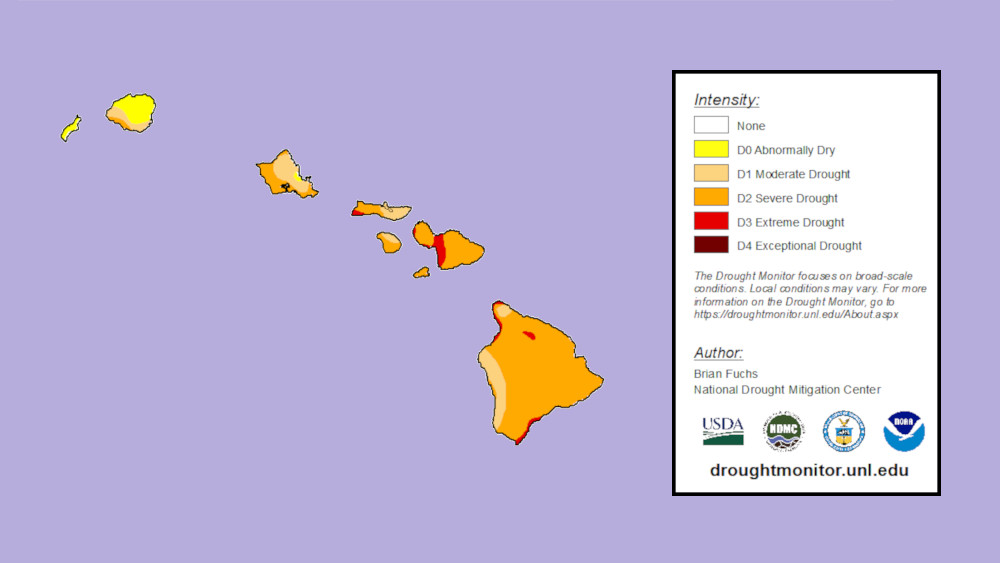(BIVN) – The dry start of the wet season in Hawaiʻi continues, according to the latest map published by the U.S. Drought Monitor.
Most of the Island of Hawaiʻi is under a D2 Severe Drought, the map shows, with small swaths of D1 Moderate Drought in Kona and windward North Kohala. There are even smaller spots of D3 Extreme Drought along the windward coast of Kaʻū, leeward North and South Kohala, and an area on the northern slope of Maunakea.
“More degradation took place in Hawaii on the Big Island, Maui and Molokai but some improvements were also made on Kauai and the northwest side of the Big Island,” the U.S. Drought Monitor wrote on November 2.
The Monitor says that under D2 Severe Drought conditions, fire danger is high, pasture conditions are poor, and certain crops like protea, coffee, and sugar cane can struggle.
Under D3 Extreme Drought, fire can spread more rapidly, and outdoor burn bans are implemented. Water production is reduced, and trees are dry and can begin dropping leaves.
On November 1st, the National Weather Service reported that “Hilo Airport broke the record minimum total monthly rainfall of 1.36 inches for the month of October.” The old minimum rainfall record for the month of October was 2.40 inches, set back in 1962.
The National Weather Service last month reported that the El Niño climate pattern “is likely to peak as a strong event and continue into spring 2024”, adding that models favor “large scale below average rainfall through the entire wet season” with the potential for more than 40 percent of Hawaiʻi to be in severe to exceptional drought by the end of February.” Drought is expected to continue into the 2024 dry season.
NWS Senior Service Hydrologist Kevin Kodama warned that rainfall deficits could impact agriculture and water supply, especially for residents using rainfall catchment systems. “Out of season” fires will also be possible due to the continued presence of dry fuels.


by Big Island Video News3:42 pm
on at
STORY SUMMARY
HAWAIʻI - Hilo Airport broke the record, set back in 1962, for the minimum total monthly rainfall for the month of October.